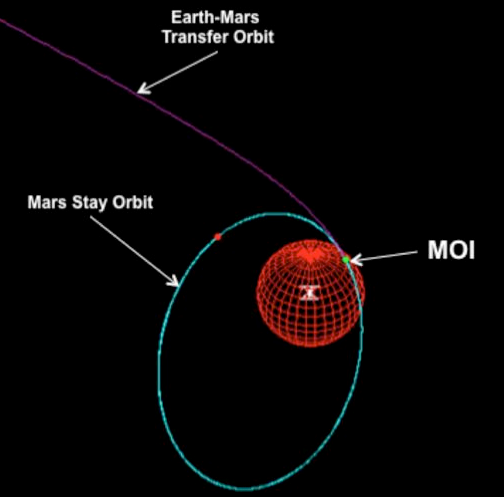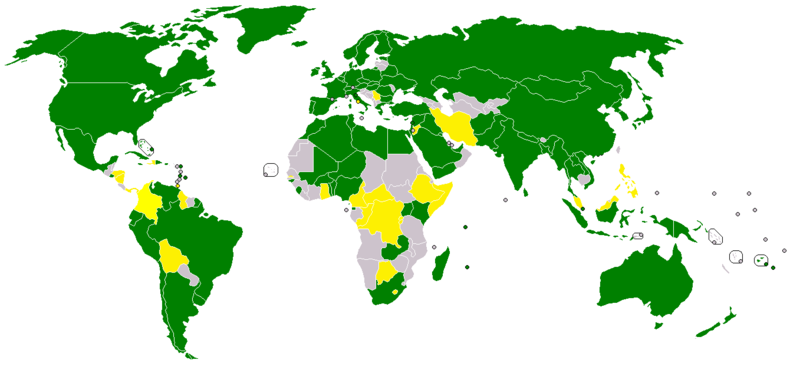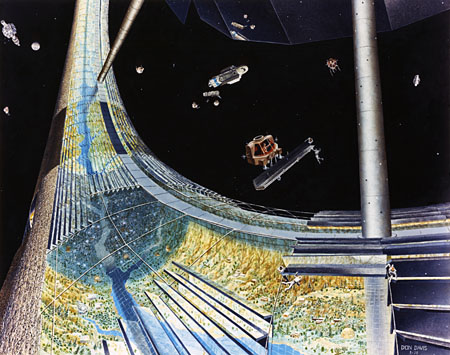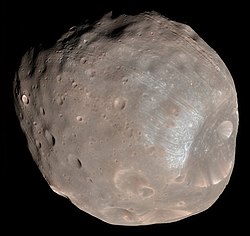This special edition of the Space Show may be of special interest if you read my recent science20.com articles about Mars and space colonization. I was asked great questions by David Livingston, and listeners to his live show.
Could Mars One comply with the Outer Space Treaty and planetary protection? What about Elon Musk's Space-X plans to colonize Mars? NASA's plans for a Mars sample return? Missions to the Moon and asteroids? What would it be like to explore Mars from orbit, telerobotically, and never set foot on it in person?
Other questions asked by listeners to the show included: Is music is a universal language shared with ETs? Would ETs visiting Earth, either in fiction, or in real life, need to be concerned about contaminating us with their microbes? It was a fun discussion.
You can listen to the radio show here as a podcast: "Humans to Mars and other destinations in the solar system - with Robert Walker".
The Space Show has had 2100 shows since 2001. Just about all the main figures in space colonization have been on it at one time or another, often several times. Is a great show to follow if you are interested in keeping up to date with space colonization news, developments and issues.
Here are some of the articles we discussed. Also links and details for some of the other things we mentioned in the show, so you can follow them up further.
Ten reasons
The original article, the one that most of the discussion was about, is Ten Reasons NOT To Live On Mars - Great Place To Explore
I also did a follow up series of five articles going into the same topics in a more leisurely way with many more details, starting with: Mars, Planet Of Surprises, Great To Explore Not So Great To Colonize - 1. Is It As Good A Place To Live As A Desert?.
Pathfinder photograph of the surface of Mars (white balanced to look like an Earth landscape, to assist the geologists)
Is Mars as good a place to live as a desert?
The other articles in the series are:
For telerobotics exploration and the value of pristine Mars try the last one in that series:

Image from the Telerobotics Symposium held in 2012, one of the recommendations was that telepresence be used to explore Mars during the early orbital missions.
Asteroid Resources
Asteroid Resources Could Create Space Habs For Trillions; Land Area Of A Thousand Earths
NASA artwork from the 1970s for the Stanford Torus design
Artist's impression of interior of a Stanford Torus space habitat from the 1970s, population of 10,000. This could be made, complete with all the cosmic radiation shielding, using the material of a tiny asteroid like Nerius a few hundred meters across.
You could make enough of these to house trillions of people, with land area of a thousand Earths, using just the materials available in the Asteroid belt.
The 1970s book I mentioned in the show, the one which came to the same conclusion, that the asteroids have enough material to make space habitats with ground area of a thousand Earths is "Colonies in Space" by T. A. Heppenheimer - see his chapter 2.
Inspiration Mars and telerobotic exploration
The Telerobotics Symposium held in 2012 came to the conclusion that it would be a major missed opportunity to send a human mission to Mars orbit and not use it to explore the surface telerobotically.
In the show, I suggested that Inspiration Mars would be an excellent chance to do a technology demo of telerobotic exploration of Mars. For instance, even with their short flyby, an inspiration Mars crew could probably drive a rover like Curiosity from its landing site to Mount Sharp (five miles) in a single day, easily, with a sufficiently powerful motor, or carry out intricate scientific experiments that can be done much more rapidly with real time work on Mars.
The idea of exploring Mars telerobotically has been suggested several times in the past.
- Geoffrey Landis and his team's HERRO mission uses a slowly precessing near sun synchronous Molniya orbit. This is a highly elongated orbit, easy to get into as it is similar to a Mars capture orbit. It requires delta V similar to a landing on the Moon, The spacecraft approaches the sunny side of Mars twice in each Martian day so permitting telepresence operation on opposite sides of the planet by the same crew.

See: HERRO mission to mars using telerobotic surface exploration from orbit
- Robert Zubrin's Robert Zubrin's Double Athena Flyby - it is a "free return trajectory" like Inspiration Mars. It just needs one boost from Earth and then is on course to return to Earth. This is a longer mission than Inspiration Mars, 700 days instead of 500, and instead of a single fly by has two of them. One deflects the spacecraft into an orbit similar to that of Mars. Another one year (half a Martian year) later deflects it back to Earth. In between it spends many days within light seconds of Mars. This mission can be launched every two years, and has the advantage of a normal re-entry speed on return to Earth without the fast re-entry issues of Inspiration Mars.
- Lockheed Martin's "Red Rocks project" as part of their "Stepping stones to Mars" project - this time the target is Deimos rather than an orbiting station
- Russia suggested a similar mission as an international effort, with US participation for the landers, called the Mars Piloted Orbital Station
I mentioned the study for HERRO which found that a single mission to explore Mars by telepresence from orbit would achieve more science return than three missions by the same number of crew to the surface - which of course would cost vastly more. Here is a powerpoint presentation from the HERRO team, with details of the comparison.
Value of pristine Mars as a resource
What ancient mars may have looked like billions of years ago. Credit Ittiz
This is my article which David mentioned about the value of pristine Mars; How Valuable is Pristine Mars for Humanity - Opinion Piece?
Life on present day Mars
David asked me if I think there is likely to be life on present day Mars. For more about this, see Might there be Microbes on the Surface of Mars?
Also I talk some more about whether it was much easier for life to transfer between the planets in the early solar system in: Does Earth Share Microbes With Mars Via Meteorites - Or Are They Interestingly Different For Life?
Terraforming Issues
For more about the terraforming issues I mentioned:
Would Microbes From This Astronaut Make It Impossible For Anyone To Terraform Mars - Ever?
Blue and pink exoplanets
My article about a blue exoplanet, which David mentions in the second half is: True Colour Of Exoplanet Is Blue, Light Scattered From Drops Of Glass
This is an article about the pink exoplanet I mentioned in the talk
Planetary Protection on the Space Show
Here is the space show David mentioned, with Cassie Conley as guest - NASA's Planetary Protection Officer.
Planetary protection human guidelines
Cassie Conley in that show mentions the human mission guidelines. Here are a few links on that topic
2012 paper on the topic by Catherine Conley and John Rummel: Preparing for the human exploration of mars: health care and planetary protection requirements and practices
Here is a paper on the topic by John Rummel Planetary Protection for Planetary Science and Exploration
Here is a short book Protecting the Environment of Celestial Bodies, see particularly the chapter Human Missions to Mars – a Challenge for Planetary Protection by Gernot Groemer (page 50).
Legal situation
I was asked several times about the legal situation for colonization and sample return. This is of course of great importance and so I've collected some material here on the subject if you want to follow it further.
This is based on the Outer Space Treaty, which is signed by all the space faring nations and almost all aspiring space faring nations as well as most other countries in the world

| - signed and ratified | |
| - signed only |
Article IX
"... States Parties to the Treaty shall pursue studies of outer space, including the moon and other celestial bodies, and conduct exploration of them so as to avoid their harmful contamination and also adverse changes in the environment of the Earth resulting from the introduction of extraterrestrial matter and, where necessary, shall adopt appropriate measures for this purpose... ". (Outer Space Treaty)
For forward contamination "harmful" here has been understood to mean "harmful to the scientific interests of other parties.
The situation for forward contamination has been clarified by the internatinoal COSPAR committee, a large group of scientists which meets every two years. They developed a series of guidelines that need to be followed, and a classification of missions into five categories I to V depending on the target and whether it is a landing, a fly-by or a sample return. For details see Planetary Protection.
Good background on forward contamination: Preventing the Forward Contamination of Mars (2006 study by the National Research Council), see particularly chapter 8 A Path Forward for Planetary Protection in the 21st Century which asks the question whether current planetary protection requirements for Mars are stringent enough.
Short intro to the whole subject as powerpoint type slides: Introduction to Planetary Protection - by Gerhard Kminek, planetary protection officer for the ESA and Cassie Conley, planetary protection officer for NASA, Recent news story on planetary protection: Protecting the Solar System... From Us
Legal implications for sample return
This is the paper by Margaret Race which I mentioned in the show, it goes into the legal implications of a sample return from Mars or any other "restricted Category V" mission in detail (sample return from a place in the solar system that might have life). You might be surprised at how much is involved.
Even in the case where everyone is in agreement that it should be done, still it would take probably many years and quite possibly decades to get the legal situation sorted out!
Her paper doesn't seem to have had the attention it deserves. It is a different world now from Apollo and what worked legally for Apollo would not work today.
M. S. Race Planetary Protection, Legal Ambiguity, and the Decision Making Process for Mars Sample Return Adv. Space Res. vol 18 no 1/2 pp (1/2)345-(1/2)350 1996
Legal Property Rights
We also got to the topic of property rights under the Outer Space Treaty. Might this be a motivation to withdraw from the Treaty?
Here the relevant article is
Article VIII
"... Ownership of objects launched into outer space, including objects landed or constructed on a celestial body, and of their component parts, is not affected by their presence in outer space or on a celestial body or by their return to the Earth..." . (Outer Space Treaty)
This has been interpreted as meaning that if you construct a habitat on the Moon or use materials from an asteroid to construct a habitat in space, that you own the habitat though not the Moon or asteroid.
If understood this way, it could be a basis for laws of functional ownership within the context of the Outer Space Treaty. See the article at spacefuture.com by Wayne White: Real property rights in outer space. This is a matter of a fair bit of discussion but it does seem at least possible that one could develop reasonable laws of ownership within the context of the Outer Space Treaty.
My Mars sample return articles
- Need For Caution For An Early Mars Sample Return - Opinion Piece
- Mars Sample Receiving Facility and sample containment
- Does Earth Share Microbes With Mars Via Meteorites - Or Are They Interestingly Different For Life?
- Could Microbes Transferred On Spacecraft Harm Mars Or Earth - Zubrin's Argument Revisted
- Mars Sample Return - Legal Issues and Need for International Public Debate
ETs and Fermi's Paradox
Alex the grey parrot, famous for his language skills. He had a vocabulary of 100 words, showed understanding of their meaning e.g. using colour words correctly, used syntax and other traits showing basic language competence. If ETs were similar in structure to a grey parrot they would find it hard to build optical and radio telescopes and might never make any advanced technology as we understand it.
This is my article about ETs and Fermi's paradox Why Didn't ETs, Or Self Replicating Machines, Colonize Our Solar System Millions Of Years Ago?
I haven't got anything up yet about whether music is likely to be a universal language with ETs as in "Close Enocounters", or about Phobos and Deimos as places for exploration.
Starship Century
In the question about whether any ETs visiting Earth, either in fiction, or in real life, need to be concerned about contaminating us with their microbes, I mentioned the afterword to a book on interstellar travel.
This was Paul Davies' afterword to Starship Century. He was on the Space Show recently to talk about this and other things, see
Space Show: Paul Davies - interstellar travel, microbiology, cosmology, Mars, and much more
Sputnik
David Livingston mentioned that it was the anniversary of the launch of sputnik last Friday 4th October, the time of the talk. Here is a replica of it, the seed that lead to all the space exploration since then

Patrick Moore
When David asked me where my interest in space colonization came from, I mentioned growing up in the age of Apollo, and science fiction.
I didn't think to say so on the show, but another inspiration was Patrick Moore, who inspired several generations of young astronomers with his enthusiasm and wide ranging understanding of astronomy. I think he has a lot to do with the current vigorous state of amateur astronomy in the UK.

I've watched a fair number of episodes of Sky at Night, and also read his books, and I think his show is a major part of the reason I'm interested in astronomy.
I've never been an observational astronomer, would call myself an "armchair amateur astronomer". I follow the space missions and astronomy news, and read a lot about it, but don't spends hours every starry night looking at the sky through a telescope. I can well understand those who do though, and think a clear night sky is a glorious sight.
Deimos and Phobos
Phobos, innermost moon of Mars.
I haven't yet got any articles about using Phobos or Deimos for colonization except a calculation of the amount of land area of habitats you could get from Deimos alone, in Asteroid Resources Could Create Space Habs For Trillions; Land Area Of A Thousand Earths
I plan an article on this in the future some time. There is a fair amount written about it if you search around.
I said in the talk that the innermost Martian Moon is predicted to hit Mars - actually it will disintegrate first due to tidal forces in 30 - 50 million years or less. (I suppose assuming it isn't used in its entirety to make space habitats first :) ).
That is long enough so that any contamination we introduce within the first 10 meters or so would be long sterilized if we did decide to keep Mars pristine on the very long term. Though there may be other issues. There is a small possibility of back contamination from very recent meteorite impacts on Mar - and of forward contamination too, come to think of it, if meteorites hit Phobos and knock material off to land on Mars.
It would need to be researched, certainly no problem using materials from Phobos or Deimos to make habitats or to use for cosmic radiation sheilding, water supply, atmosphere etc. If back contamination was an issue at all, you just need to sterilize the material first.
Here is a story about the value of Phobos as a possible abode of ancient Martian life
Could we communicate with ETs using music?
I haven't got anything about this yet, but plan an article on this interesting question in the near future.
Urls
David gave these out several times in the show. Here they are:
science20.com/robertinventor for my column at science20
youtube.com/marsandspace for my youtube channel.









Comments